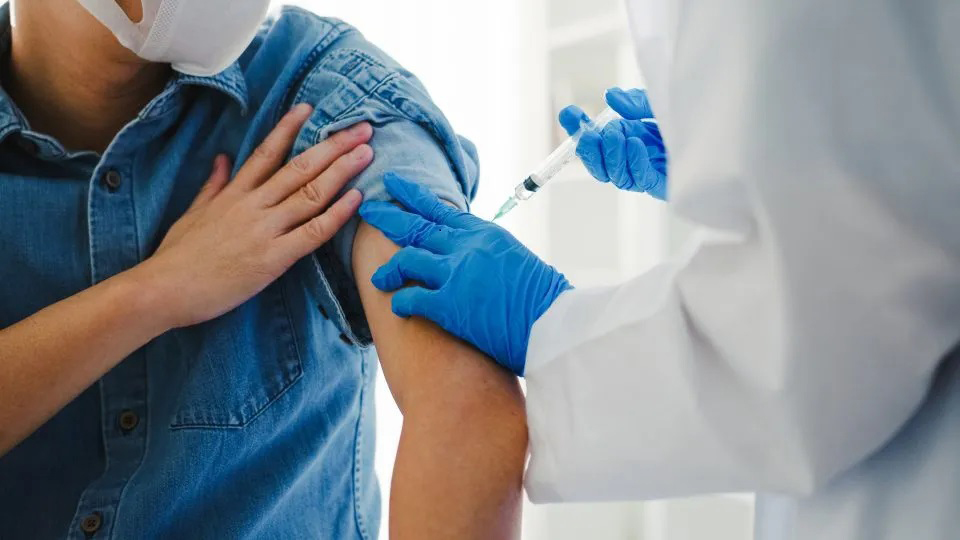
美國宣布新冠公共衛生緊急狀態結束后已迎來第二個夏天,病毒學家稱之為FLiRT的病毒亞變種引發感染數逐漸上升。
“并不令人吃驚;這種情況一直存在,”南佛羅里達大學(University of South Florida College)公共衛生學院的流行病學家埃德溫·邁克爾告訴《財富》,“變異會繼續出現。”
導致新冠的病毒SARS-CoV-2奧密克戎變異株已在全球傳播近三年。2021年11月,美國疾病控制與預防中心(CDC)將其列為“值得關注的變種”。最初的奧密克戎毒株是B.1.1.529,后來變異成從BA.2.74到XBB.1.16很多亞變體。根據美國疾病控制與預防中心的新冠數據追蹤,現在美國主流病株是SARS-CoV-2奧密克戎亞變種FLiRT家族的KP.2,在5月25日之前兩周美國新增新冠感染者當中占比29%。
KP.2、KP.3和KP.1.1屬于FLiRT家族中的奧密克戎亞變體,這個名字并不可愛。按照美國傳染病學會(IDSA)的說法,這一名稱偏技術,來自亞變體常見的一對刺突蛋白突變。
“與JN.1相比,這一變種(傳染性)沒那么高,但免疫逃避性更強,”邁克爾說,“具體如何實現我們還不清楚。”
到目前為止,美國疾病控制與預防中心還未發現FLiRT感染后出現特定癥狀。可以留意以下新冠常見癥狀:
? 鼻塞或流鼻涕
? 咳嗽
? 腹瀉
? 疲勞
? 發燒或發冷
? 頭痛
? 肌肉或身體疼痛
? 再次失去味覺或嗅覺
? 惡心或嘔吐
? 呼吸急促或呼吸困難
? 喉嚨痛

新冠疫苗能預防FLiRT變異嗎?
美國傳染病學會表示,KP.2是奧密克戎亞變種JN.1的后代,JN.1在美國的傳播一直持續到今年早春,證據顯示其變種能逃避疫苗產生的免疫保護。
去年秋天美國疾病控制與預防中心推薦的2023-2024年新冠疫苗主要針對當時流行的奧密克戎亞毒株XBB。醫學雜志《柳葉刀》(Lancet)上一項新研究表明,該疫苗對KP.2可能效果有限。
即便如此,范德堡大學醫學中心(Vanderbilt University Medical Center)傳染病學系教授威廉·沙夫納還是建議及時接種新冠疫苗。
“目前可用的疫苗對新變種仍能提供明顯防護,”沙夫納告訴《財富》,“一旦感染,疫苗對感染嚴重疾病風險更高的人群來說尤其重要。”
疾病預防控制中心表示,與65歲及以上的成年人一樣,有以下疾病或情況的人罹患新冠重癥的風險很高,可能需要額外接種疫苗:
? 癌癥
? 慢性腎臟、肝臟或肺部疾病
? 囊性纖維化
? 癡呆癥或其他神經系統疾病
? 糖尿病(1型或2型)
? 殘疾
? 心臟病
? 艾滋病
? 免疫受損或免疫系統減弱
? 心理健康問題
? 超重和肥胖
? 缺乏體力活動
? 懷孕
? 鐮狀細胞病或地中海貧血
? 吸煙(當前或以前)
? 實體器官或造血干細胞移植
? 中風或腦血管疾病
? 藥物濫用
? 肺結核
即將推出的2024-2025年疫苗有望對FLiRT變種提供更好的保護。邁克爾補充說,已被JN.1感染的人可能對相關變種產生天然的交叉免疫。
“這也是不太可能出現大規模(感染)的原因,”邁克爾說。
FLiRT變種會不會導致今夏新冠疫情爆發?
今年春天,美國病例中FLiRT各變體的比例都有所增加,但1月以來每周檢測陽性率穩步下降。
對很多人來說夏天意味著旅行和聚會增加,沙夫納表示沒必要對FLiRT變種感到恐慌,不過應繼續保持公共衛生習慣,例如勤洗手以及在弱勢人群周圍戴口罩,有助于遏制病毒。
“隨著時間推移新冠逐漸減弱,但仍在蔓延。”沙夫納說,“新變種有傳染性,能引發疾病。新冠不會像流感一樣在夏季消失。”
邁克爾回應說,“也許病例會激增,但不會像去年夏天或前幾年夏天那么嚴重。”
疾病控制與預防中心的記錄顯示,去年12月以來美國每月新冠引發的住院率一直在下降,1月中旬以來每周死亡率持續下降。邁克爾說,數據表明FLiRT變異株引起的感染沒有之前的變異株嚴重。
“在這一階段,病毒只是堅持存在,”邁克爾說。“病毒不想殺人,這也是其本身的終結。病毒只是努力保持自身傳播。”(財富中文網)
譯者:梁宇
審校:夏林
美國宣布新冠公共衛生緊急狀態結束后已迎來第二個夏天,病毒學家稱之為FLiRT的病毒亞變種引發感染數逐漸上升。
“并不令人吃驚;這種情況一直存在,”南佛羅里達大學(University of South Florida College)公共衛生學院的流行病學家埃德溫·邁克爾告訴《財富》,“變異會繼續出現。”
導致新冠的病毒SARS-CoV-2奧密克戎變異株已在全球傳播近三年。2021年11月,美國疾病控制與預防中心(CDC)將其列為“值得關注的變種”。最初的奧密克戎毒株是B.1.1.529,后來變異成從BA.2.74到XBB.1.16很多亞變體。根據美國疾病控制與預防中心的新冠數據追蹤,現在美國主流病株是SARS-CoV-2奧密克戎亞變種FLiRT家族的KP.2,在5月25日之前兩周美國新增新冠感染者當中占比29%。
KP.2、KP.3和KP.1.1屬于FLiRT家族中的奧密克戎亞變體,這個名字并不可愛。按照美國傳染病學會(IDSA)的說法,這一名稱偏技術,來自亞變體常見的一對刺突蛋白突變。
“與JN.1相比,這一變種(傳染性)沒那么高,但免疫逃避性更強,”邁克爾說,“具體如何實現我們還不清楚。”
到目前為止,美國疾病控制與預防中心還未發現FLiRT感染后出現特定癥狀。可以留意以下新冠常見癥狀:
? 鼻塞或流鼻涕
? 咳嗽
? 腹瀉
? 疲勞
? 發燒或發冷
? 頭痛
? 肌肉或身體疼痛
? 再次失去味覺或嗅覺
? 惡心或嘔吐
? 呼吸急促或呼吸困難
? 喉嚨痛
新冠疫苗能預防FLiRT變異嗎?
美國傳染病學會表示,KP.2是奧密克戎亞變種JN.1的后代,JN.1在美國的傳播一直持續到今年早春,證據顯示其變種能逃避疫苗產生的免疫保護。
去年秋天美國疾病控制與預防中心推薦的2023-2024年新冠疫苗主要針對當時流行的奧密克戎亞毒株XBB。醫學雜志《柳葉刀》(Lancet)上一項新研究表明,該疫苗對KP.2可能效果有限。
即便如此,范德堡大學醫學中心(Vanderbilt University Medical Center)傳染病學系教授威廉·沙夫納還是建議及時接種新冠疫苗。
“目前可用的疫苗對新變種仍能提供明顯防護,”沙夫納告訴《財富》,“一旦感染,疫苗對感染嚴重疾病風險更高的人群來說尤其重要。”
疾病預防控制中心表示,與65歲及以上的成年人一樣,有以下疾病或情況的人罹患新冠重癥的風險很高,可能需要額外接種疫苗:
? 癌癥
? 慢性腎臟、肝臟或肺部疾病
? 囊性纖維化
? 癡呆癥或其他神經系統疾病
? 糖尿病(1型或2型)
? 殘疾
? 心臟病
? 艾滋病
? 免疫受損或免疫系統減弱
? 心理健康問題
? 超重和肥胖
? 缺乏體力活動
? 懷孕
? 鐮狀細胞病或地中海貧血
? 吸煙(當前或以前)
? 實體器官或造血干細胞移植
? 中風或腦血管疾病
? 藥物濫用
? 肺結核
即將推出的2024-2025年疫苗有望對FLiRT變種提供更好的保護。邁克爾補充說,已被JN.1感染的人可能對相關變種產生天然的交叉免疫。
“這也是不太可能出現大規模(感染)的原因,”邁克爾說。
FLiRT變種會不會導致今夏新冠疫情爆發?
今年春天,美國病例中FLiRT各變體的比例都有所增加,但1月以來每周檢測陽性率穩步下降。
對很多人來說夏天意味著旅行和聚會增加,沙夫納表示沒必要對FLiRT變種感到恐慌,不過應繼續保持公共衛生習慣,例如勤洗手以及在弱勢人群周圍戴口罩,有助于遏制病毒。
“隨著時間推移新冠逐漸減弱,但仍在蔓延。”沙夫納說,“新變種有傳染性,能引發疾病。新冠不會像流感一樣在夏季消失。”
邁克爾回應說,“也許病例會激增,但不會像去年夏天或前幾年夏天那么嚴重。”
疾病控制與預防中心的記錄顯示,去年12月以來美國每月新冠引發的住院率一直在下降,1月中旬以來每周死亡率持續下降。邁克爾說,數據表明FLiRT變異株引起的感染沒有之前的變異株嚴重。
“在這一階段,病毒只是堅持存在,”邁克爾說。“病毒不想殺人,這也是其本身的終結。病毒只是努力保持自身傳播。”(財富中文網)
譯者:梁宇
審校:夏林
As the nation begins its second summer following the end of the federal COVID-19 public health emergency, a new family of viral subvariants that virologists are calling FLiRT is on the rise.
“This is not a surprise; this is always in the cards,” Edwin Michael, PhD, an epidemiologist at the University of South Florida College of Public Health, tells Fortune. “The mutations will keep happening.”
The Omicron variant of SARS-CoV-2, the coronavirus that causes COVID-19, has been circling the globe for nearly three years. In the U.S., the Centers for Disease Control and Prevention (CDC) classified it as a “variant of concern” in November 2021. The original Omicron strain, B.1.1.529, has since mutated into a number of subvariants, from BA.2.74 to XBB.1.16. Now a subvariant called KP.2 is the dominant strain nationwide, accounting for 29% of infections during the two-week period ending May 25, per the CDC’s COVID Data Tracker.
KP.2, KP.3, and KP.1.1 are among the Omicron subvariants in the FLiRT family, which isn’t a cutesy moniker. Rather, it comes from the technical names of a pair of spike protein mutations common to the subvariants, according to the Infectious Diseases Society of America (IDSA).
“It seems it is less [infectious] compared to JN.1, but it’s more immune-evasive,” Michael said. “Something is going on there, which we don’t know exactly.”
So far, the CDC hasn’t identified symptoms specific to FLiRT infection. Keep an eye out for these traditional COVID-19 symptoms:
? Congestion or runny nose
? Cough
? Diarrhea
? Fatigue
? Fever or chills
? Headache
? Muscle or body aches
? New loss of taste or smell
? Nausea or vomiting
? Shortness of breath or difficulty breathing
? Sore throat
Does the COVID vaccine protect against FLiRT variants?
KP.2 is a descendant of JN.1, the Omicron subvariant that dominated the U.S. through early spring, and its mutations have been shown to evade vaccine-induced immune protection, the IDSA says.
The 2023–2024 COVID-19 vaccines, recommended by the CDC last fall, were designed to target the Omicron sublineage XBB, which was spreading at the time. New research published in the medical journal the?Lancet suggests the vaccine may not be as effective against KP.2.
Even so, Dr. William Schaffner, a professor in the division of infectious diseases at Vanderbilt University Medical Center, recommends staying up to date with your COVID-19 immunizations.
“Our currently available vaccines still do provide a notable measure of protection against these newer variants,” Schaffner tells Fortune. “This is particularly important for people who are at higher risk of getting more severe disease, should they get infected.”
Along with adults 65 and older, people with the following conditions are at high risk of severe COVID-19 infection and may need additional vaccine doses, per the CDC:
? Cancer
? Chronic kidney, liver, or lung disease
? Cystic fibrosis
? Dementia or other neurological conditions
? Diabetes (types 1 or 2)
? Disabilities
? Heart conditions
? HIV
? Immunocompromised condition or weakened immune system
? Mental health conditions
? Overweight and obesity
? Physical inactivity
? Pregnancy
? Sickle cell disease or thalassemia
? Smoking (current or former)
? Solid organ or blood stem cell transplant
? Stroke or cerebrovascular disease
? Substance use disorders
? Tuberculosis
The upcoming 2024–2025 vaccines may be formulated to offer better protection against FLiRT variants. Michael adds that people who’ve already been infected by JN.1 will likely have natural cross-immunity against these variants.
“That is keeping a check on why we are unlikely to get big waves (of infections),” Michael said.
Will FLiRT variants cause a summer COVID surge?
While each of the FLiRT variants has increased its share of U.S. cases this spring, weekly test positivity percentages have steadily decreased since January.
Summertime means traveling and increased gatherings for many, and while there’s no need to panic about FLiRT variants, Schaffner says, continued vigilance about public health practices such as hand-washing and masking around vulnerable people will help keep the virus at bay.
“COVID, although it has diminished over time, it’s still out there, smoldering,” Schaffner says. “These newer variants continue to be contagious and they continue to cause illness. COVID does not disappear during the summer the way flu does.”
Michael echoes, “You will get an upsurge in cases, maybe, but you don’t reach the kinds that we saw last summer or the summer before.”
Nationwide monthly COVID-19 hospitalization rates have consistently declined since December, CDC records show, and weekly death rates have been diminishing since mid-January. These data point to FLiRT variants causing less severe infection than variants past, Michael says.
“At this stage, the virus is just trying to persist,” Michael says. “It doesn’t want to kill people—that would be the end of the virus itself. It’s just trying [to] find a way to keep itself transmitting.”






